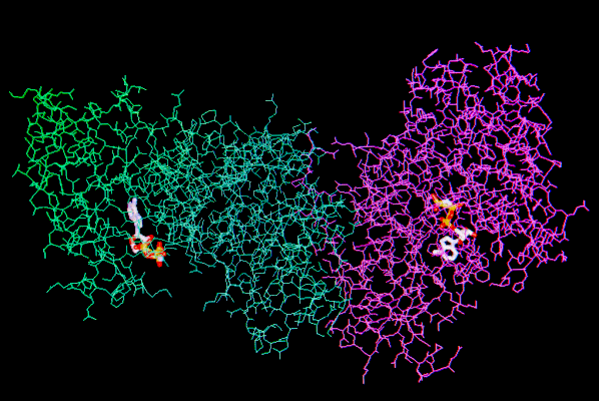Bioquímica y Biología Molecular
Departamento


University of Washington
Seattle, Estados UnidosPublicaciones en colaboración con investigadores/as de University of Washington (17)
2023
-
In Vivo Modeling of CLL Transformation to Richter Syndrome Reveals Convergent Evolutionary Paths and Therapeutic Vulnerabilities
Blood cancer discovery, Vol. 4, Núm. 2, pp. 150-169
2021
-
Association of Variants in the SPTLC1 Gene with Juvenile Amyotrophic Lateral Sclerosis
JAMA Neurology, Vol. 78, Núm. 10, pp. 1236-1248
-
Guidelines for the use and interpretation of assays for monitoring autophagy (4th edition)1
Autophagy, Vol. 17, Núm. 1, pp. 1-382
-
Targeting nuclear protein TDP-43 by cell division cycle kinase 7 inhibitors: A new therapeutic approach for amyotrophic lateral sclerosis
European Journal of Medicinal Chemistry, Vol. 210
2019
-
Dulaglutide and cardiovascular outcomes in type 2 diabetes (REWIND): a double-blind, randomised placebo-controlled trial
The Lancet, Vol. 394, Núm. 10193, pp. 121-130
-
Dulaglutide and renal outcomes in type 2 diabetes: an exploratory analysis of the REWIND randomised, placebo-controlled trial
The Lancet, Vol. 394, Núm. 10193, pp. 131-138
2016
2015
-
NR2F1 controls tumour cell dormancy via SOX9- and RARβ-driven quiescence programmes
Nature Communications, Vol. 6
-
Oligodendrocyte regeneration and CNS remyelination require TACE/ADAM17
Journal of Neuroscience, Vol. 35, Núm. 35, pp. 12241-12247
2014
-
TACE/ADAM17 is essential for oligodendrocyte development and CNS myelination
Journal of Neuroscience, Vol. 34, Núm. 36, pp. 11884-11896
2012
-
Guidelines for the use and interpretation of assays for monitoring autophagy
Autophagy, Vol. 8, Núm. 4, pp. 445-544
2007
-
Pericytes of human skeletal muscle are myogenic precursors distinct from satellite cells
Nature Cell Biology, Vol. 9, Núm. 3, pp. 255-267
-
The emerging functions of endocannabinoid signaling during CNS development
Trends in Pharmacological Sciences, Vol. 28, Núm. 2, pp. 83-92
2006
-
The endocannabinoid system promotes astroglial differentiation by acting on neural progenitor cells
Journal of Neuroscience, Vol. 26, Núm. 5, pp. 1551-1561
2005
-
The endocannabinoid system drives neural progenitor proliferation
FASEB Journal, Vol. 19, Núm. 12, pp. 1704-1706
2000
-
Cannabinoid CB1 receptors colocalize with tyrosine hydroxylase in cultured fetal mesencephalic neurons and their activation increases the levels of this enzyme
Brain Research, Vol. 857, Núm. 1-2, pp. 56-65